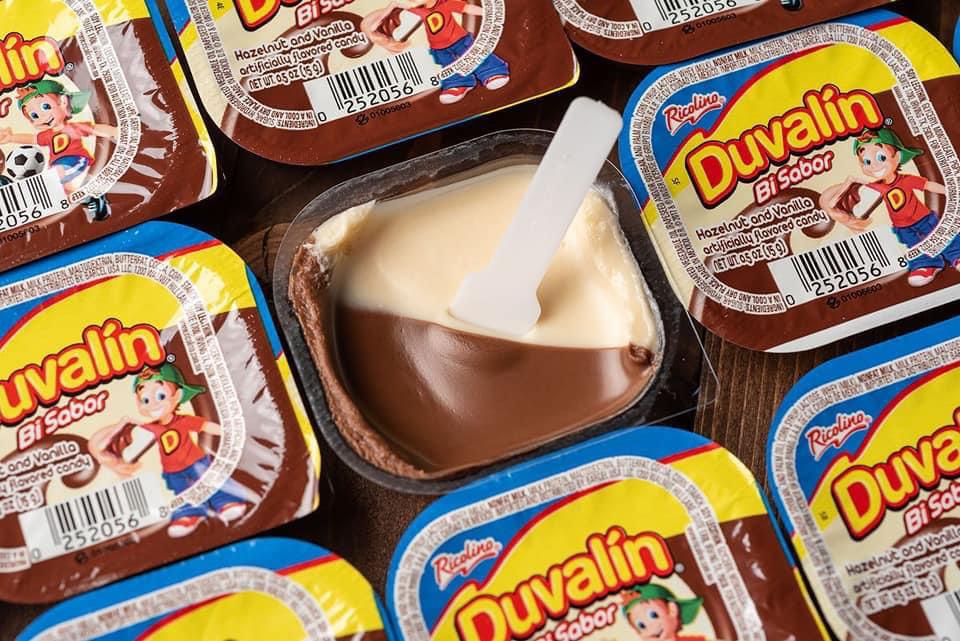Duvalin Candy a beloved treat originating from Mexico, has captivated the hearts and taste buds of generations with its unique combination of flavors and textures. This delightful confectionery has become a cultural icon, cherished not only for its delicious taste but also for its nostalgic value and the memories it evokes. In this article, we will explore the origins, ingredients, flavors, and cultural significance of Duvalin Candy, delving into what makes it a standout treat in the world of sweets.
History of Duvalin Candy
Duvalin Candy has a fascinating history that traces its roots back to Mexico in the 1940s. Created by the renowned company Ricolino, Duvalin was introduced to the market in 1949, and since then, it has become a staple in the Mexican candy landscape. The candy was named after a French family, the Duvalins, who were known for their exquisite taste and appreciation for fine food.
Initially, Duvalin was launched as a hazelnut-flavored spread, similar to European hazelnut creams. However, as it gained popularity, the product evolved into the two-layered, multi-flavored treat that we know today. The packaging and presentation of Duvalin have remained relatively consistent over the years, featuring small, colorful plastic containers that hold the distinct layers of creamy goodness.
Ingredients and Layers
One of the key factors that contribute to Duvalin’s uniqueness is its dual-layer composition. The candy consists of two distinct layers – a rich and creamy frosting-like layer on top and a dense, fudge-like layer on the bottom. Each layer offers a different flavor profile, creating a harmonious blend of tastes in every bite.
The top layer, often referred to as the “creamy layer,” comes in various flavors, including vanilla, strawberry, hazelnut, and occasionally, chocolate. This layer is smooth, velvety, and has a melt-in-your-mouth texture that adds a delightful contrast to the denser layer beneath.
The bottom layer, known as the “fudge layer,” typically has a chocolate or hazelnut flavor. It is thicker and more solid, providing a satisfying chewiness that balances the overall texture of the candy. The combination of these two layers creates a symphony of flavors that has made Duvalin a favorite among candy enthusiasts.
Flavor Varieties
Over the years, Duvalin Candy has expanded its flavor offerings to cater to diverse palates. While the classic vanilla, strawberry, and hazelnut flavors remain popular, there are now additional variations such as chocolate, caramel, and even tropical fruit flavors. This variety ensures that there’s a Duvalin flavor to suit every taste preference.
The versatility of Duvalin is not only limited to its individual flavors but also extends to the joy of mixing them. Many candy lovers enjoy experimenting with different flavor combinations, creating their own customized Duvalin experiences by layering or swirling the various flavors together.
Cultural Significance
Duvalin Candy is more than just a sweet treat; it holds a special place in Mexican culture and childhood memories. The colorful packaging, playful design, and the joyous experience of peeling back the lid to reveal the layers evoke a sense of nostalgia for many Mexicans. Duvalin is often associated with happy moments, celebrations, and the simple pleasures of life.
In Mexico, Duvalin is a popular party favor, and it is frequently included in piñatas, making it an integral part of festive occasions. Its affordability and widespread availability also contribute to its popularity, ensuring that people from all walks of life can enjoy this delightful candy.
Moreover, Duvalin has transcended its Mexican origins and has gained recognition and popularity in other Latin American countries, as well as among Hispanic communities worldwide. The candy’s international appeal has turned it into a symbol of Mexican confectionery craftsmanship.
Marketing and Packaging
Duvalin’s success is not only attributed to its delectable taste but also to its clever marketing and eye-catching packaging. The small, plastic containers, adorned with vibrant colors and whimsical illustrations, instantly grab the attention of both children and adults. The individual servings make Duvalin a convenient and portable snack, adding to its appeal as an on-the-go treat.
The branding of Duvalin has remained consistent over the years, featuring the iconic Duvalin logo and the recognizable image of the Duvalin family. This continuity in branding has contributed to the candy’s status as a nostalgic and trusted product.
Conclusion
Duvalin Candy stands out as a unique and cherished sweet treat that has successfully transcended generations and borders. Its rich history, diverse flavors, and cultural significance make it a symbol of joy and celebration in Mexico and beyond. Whether enjoyed as a childhood favorite or discovered as a delightful international treat, Duvalin continues to captivate hearts and taste buds with its creamy layers of happiness. So, the next time you indulge in the sweet pleasures of Duvalin Candy, savor not just the flavors but the rich cultural experience that comes with each delightful bite.







